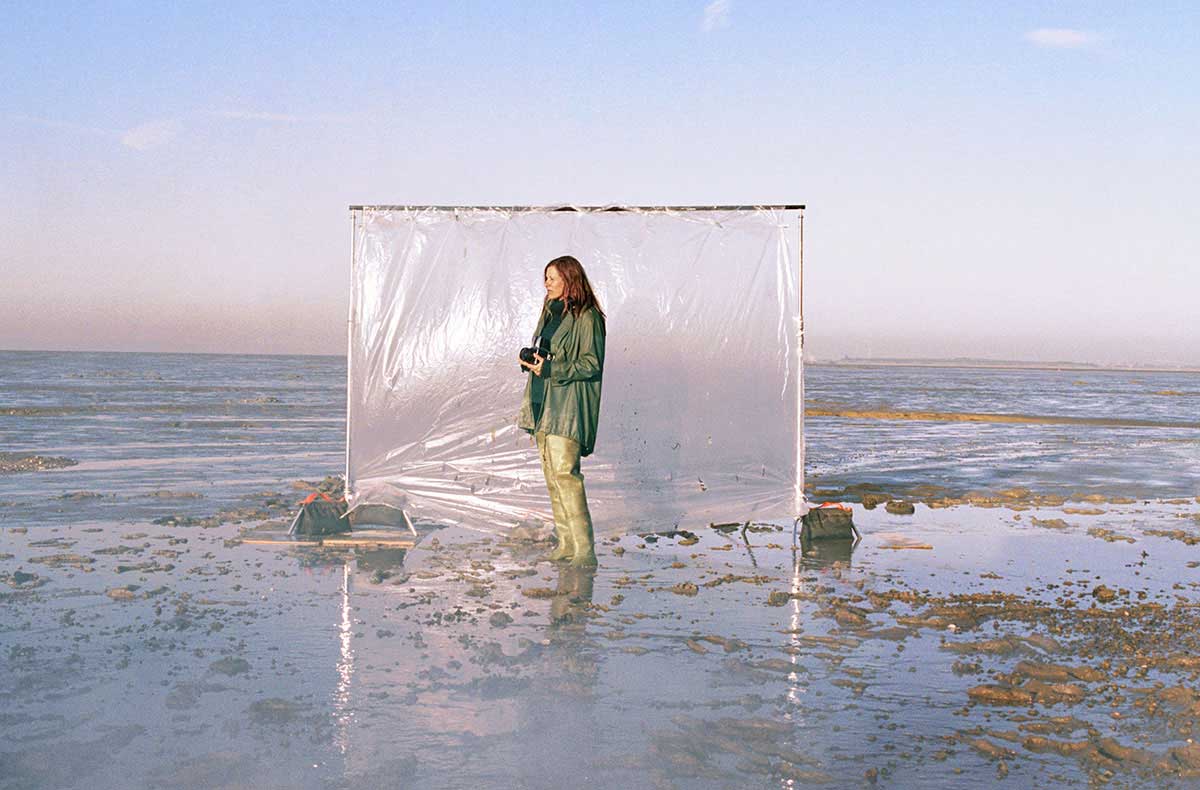Julia Fullerton-Batten is a worldwide acclaimed and exhibited fine-art photographer. Her body of work now encompasses twelve major projects spanning a decade of engagement in the field.
The foundation of her success was ‘Teenage Stories’ (2005), an evocative narrative of the transition of a teenage girl to womanhood. This and sequel projects portray the difficult stages and life situations of an adolescent girl’s transition to womanhood as she grapples with the vulnerability of her teenage predicament – adjustments to a new body, her emotional development and changes in her social standing. Julia’s book ‘Teenage Stories’ was published in 2007. Julia admits to a pronounced semi-autobiographical influence in much of her earlier work, often falling back on recollections of her own early and teenage years, living in Germany, the USA and the UK, her parent’s divorce, and her own early relationships.
Fullerton-Batten was born in Bremen, Germany. Her early life was spent in Germany and the USA, but after her parent’s divorce she and her siblings moved to the UK. There she completed her secondary education, then studied photography at college. Subsequently she assisted professional photographers for five years before a first commercial assignment kick-started her career in 1995, and first gained recognition as a fine-art photographer in2005.
Fullerton-Batten has won countless awards for both her commercial and fine-art work, and is a Hasselblad Master. She was commissioned by The National Portrait Gallery in London to shoot portraits of leading people in the UK National Health Service. These are now held there in a permanent collection. Other images are also in permanent collection at the Musee de l’Elysee, Lausanne, Switzerland. She is widely interviewed about her projects by professional photographic magazines from around the world and is sought after as a speaker at international events and as a judge for prestigious international photographic competitions.[Official Website]
I am really interested in this cinematic quality that your images demonstrate, specifically about your project titled ‘Mothers and Daughters’. What I found most interesting about this archive was one specific piece called ‘Memories’ and this re-created relationship between you and your mother. What fascinates me is the attention to detail in objects like the apple… Did you ever consider artists like Paul Cézanne and his paintings of his apples during the decision-making process? Because it feels like you are dancing with this idea of painting and film, when I look at images like ‘Memories’.
My photographic style encompasses cinematic lighting, powerful colour combinations, careful choice of models and the use of settings and props which enhance the visual story I am telling. I continually study the works of painters of all eras (Edward Hopper is a particular favourite), artists, cinema/TV and life around me for inspiration. In my images you will see fruit or plants … fresh, sometimes wilting flowers or rotten fruit. It is symbolic. Fruit and flowers portray the transient nature of human existence. Fresh, they represent fertility, vitality, youth, and abundance; decaying, they characterise the transience of our human existence.
The rotten fruit and wilting sunflowers seen in my image ‘The Divorce’ in my Mothers and Daughters project reflects on the negative situation and imparts a sense of grief as the mother comforts her daughter that she is about to leave the family forever. This entire project reflects on my own experiences with my own mother and those she told me about hers with her mother.
I left fruit to rot in my garage for weeks so that I could include it in my image of ‘Simon’ lying naked on a kitchen table in my ‘Unadorned Project’. The idea for this was inspired by the Danish film ‘Babette’s Feast’, directed by Gabriel Axel, a sensuous celebration of the pleasures of good food. I saw the film many years ago and remembered it as being quite grotesque, but beautiful and incredibly visual at the same time.
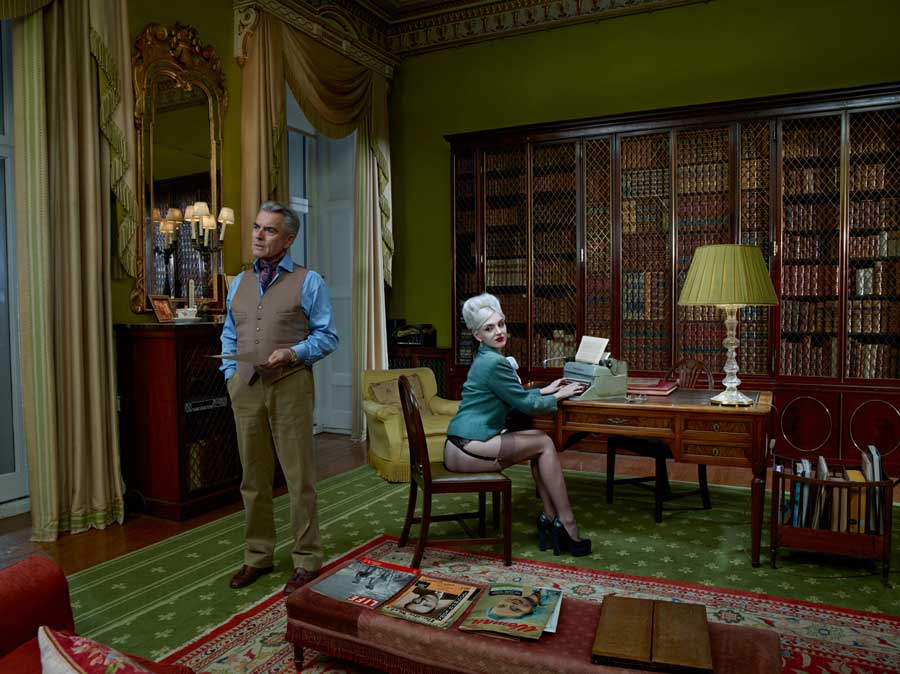
When looking at the various collections of work that you have produced, I seem to be presented with this idea of the interpreted truth. Specifically, with projects like 2014’s ‘In Service’ and ‘A testament to love’. Is this in part your goal as a photographer to dissuade the viewer slightly and only present a fraction of the truth in your photographs?
In planning the projects I consider themes of actual life events, some those that I have experienced myself, others for which I research the subject matter exhaustively, such as that for ‘In Service’. The exploitation of many servants during the Edwardian period in the UK revealed in ‘In Service’ is well documented and many illegitimate babies resulted from it. The images in my ‘A Testament to Love’ project resulted from my own experiences of unrequited love as a young woman. I freely admit to heightening the drama in my settings and the poses of the models when re-creating the scene in order to achieve a maximum visual effect.
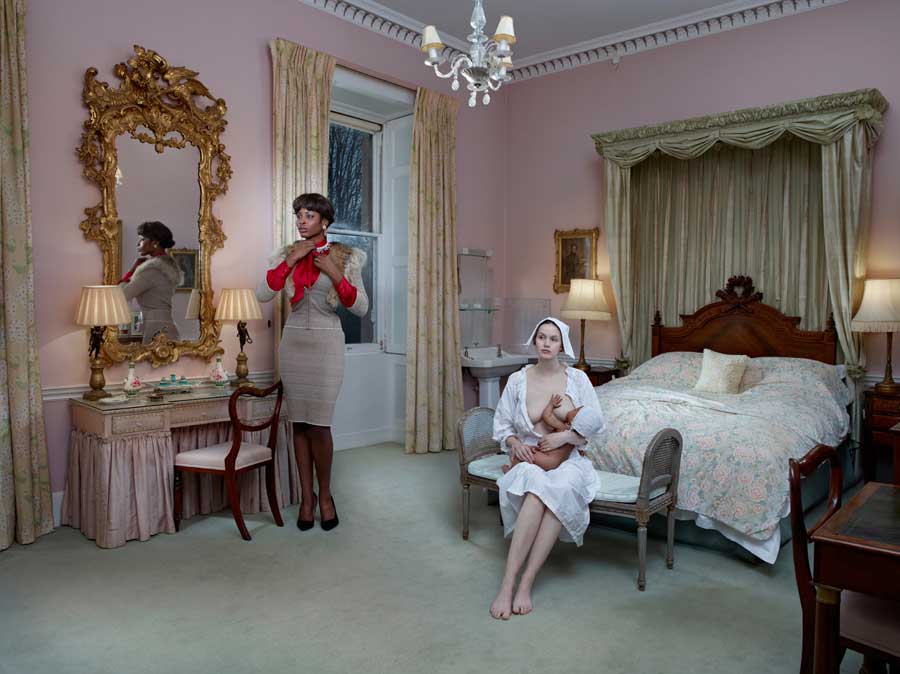
I’d like to briefly talk about comedy and how colour is an important factor when assembling your subjects and finding locations. Do you draw inspiration for photographers like Martin Parr and Peter Frazer, who’s use of colour is a prominent and dominating factor? Or have you always identified with the tonality that you aim to capture in every image and why?
For me colour is important. I use it to set the overall mood and tone of the image and to lead the viewer’s eye to get a better understanding of the meaning and sense behind the image. But every other detail in the image is also of great significance and importance to me. On the other hand, if something doesn’t have a meaning or a reason to be there, I will remove it regardless of how much effort I might have put into it during the planning phase.
Even as a photographic assistant I was super inspired and still am today by William Egglestone’s work. I find his use of colour to be stunning and his images timeless.
A few years ago I was fortunate to have a large body of my work exhibited at the Fotografiska Gallery in Stockholm. When I entered the exhibition space I was very surprised to see that its walls were decorated in a combination of my then two favourite colours – purple and green. When I asked the exhibition designer if they knew that those were my favourite colours, they answered, it was obvious…’.those two colours kept appearing in all of my images!’ Something even I wasn’t aware of at the time.
A lot of your personal work is very individual. Before even compiling a collection of images together to create a project with a narrative, do you consider these images under the ‘Personal category’, to actually be pivotal in sparking ideas for future projects. Because you seem to juggle with elements like composition and colour in a much looser fashion? Photographs like ‘Octavia, bedroom’ and ‘Toddler with dog’ exemplify this.
I work on my art projects for much longer than my personal work and spend a lot more effort in planning as well as in the thought and research processes. They comprise from twelve or more images. My ‘Old Father Thames project is now over three years old and now includes 21 images and a short film. Although being less in scale, frequently even a one-off my personal work is more spontaneous but contains the same amount of devotion to detail as my projects have.
The appealing ‘Toddler with Dog’ image exemplifies this. I was invited to attend an exhibition of my work in Tokyo and give a talk on it. I decided to use the opportunity to take an assistant, a translator and a couple of suitcases with me on a walk around the city. It is the closest I will ever get to ‘professional’ street photography.
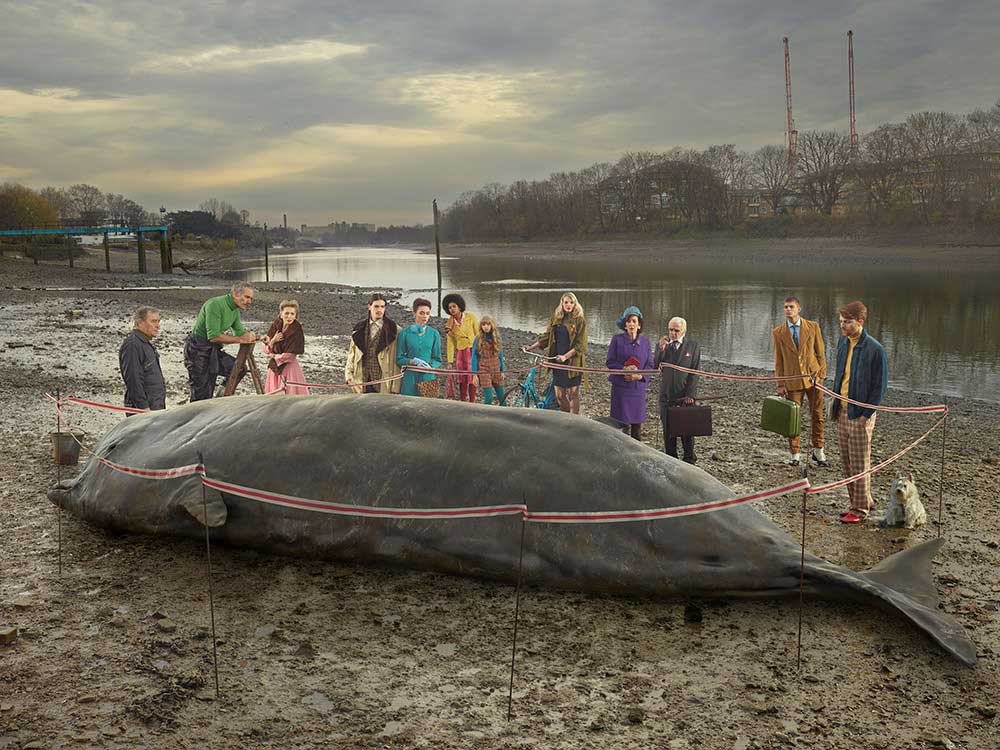
Moving on to one of your most recent bodies of work. ‘Old Father Thames’ explores the many characters that the river Thames has undergone over the years. You even stated that “you are not alone in your admiration of the glories of the river”. Which is interesting when you compare that statement to images like ‘Bathing by tower bridge’ and ‘Mary Wollstonecraft’, which hint at the idea that the river Thames is a polluted and hazardous place. Do you feel that this project will continue this narrative of comparing what once was and now has become? Or will this project become more of a historical archive? Are you considering extending this most recent project further? Possibly exploring the idea of short films or even performance art in or around the Thames itself?
Britain led the Industrial Revolution and London especially had a large and growing population, massive docks and was an industrial centre, so it was not surprising that the Thames suffered from pollution throughout the 19th and 20th centuries. Happily, after determining changes in the industrial base in London and massive environmental improvements it is now possible to catch fish again in the waters of the Thames.
Health and safety precautions are still necessary as the river is tidal up to London and a few kilometers further upstream; the water level changes by up to 7 meters twice a day and all sorts of detritus can be brought upstream from lower reaches of the Thames and the North Sea. The ‘glories of the river’ I referred to in my artist statement was connected with paintings of renowned painters and related more to the scenery, the sunsets and the sailing boats. These can still be appreciated although the sailing boats are now rowing boats and yachts.
I have been working on my ‘Old Father Thames’ project for over three years and have barely touched the surface of all the possible historical events, traditions and customs that I could capture. My visual stories, now totalling twenty-one images encompass birth, baptism, death, prostitution, sun-bathing in the shadow of the Tower Bridge, the building of the Ladies Bridge by women during the last war, flooding of the Tate Gallery, riverside scavenging children as in Dickens’ time, and other whimsical, idiosyncratic and tragic happenings.
My latest shoot recaptured the Frost Fair that took place in 1812 when the Thames froze over sufficiently for opportunistic London entrepreneurs to set up stalls and entertainment on the ice. These included artistes such as fire-eaters, sword-swallowers, contortionists, midget strongmen, wrestlers as well as tents offering food and alcohol. Dancing, ice sports, gambling added to the mix, and prostitutes and pickpockets did a roaring trade. A printer even set up his press on the ice to print a 124-page book, Frostiana; or a History of the River Thames in a Frozen State. A major spectacle was when an African elephant was led across the ice to the amazement of the crowds.
I created this set-up with 95 people on set in a studio in London, including models, assistants, stylist, etc.. I found the story-telling so fascinating that I decided, besides stills to also direct a short film of it, complete with all the artistes’ and visitors activities as well, of course, of the giant elephant crossing the ice.
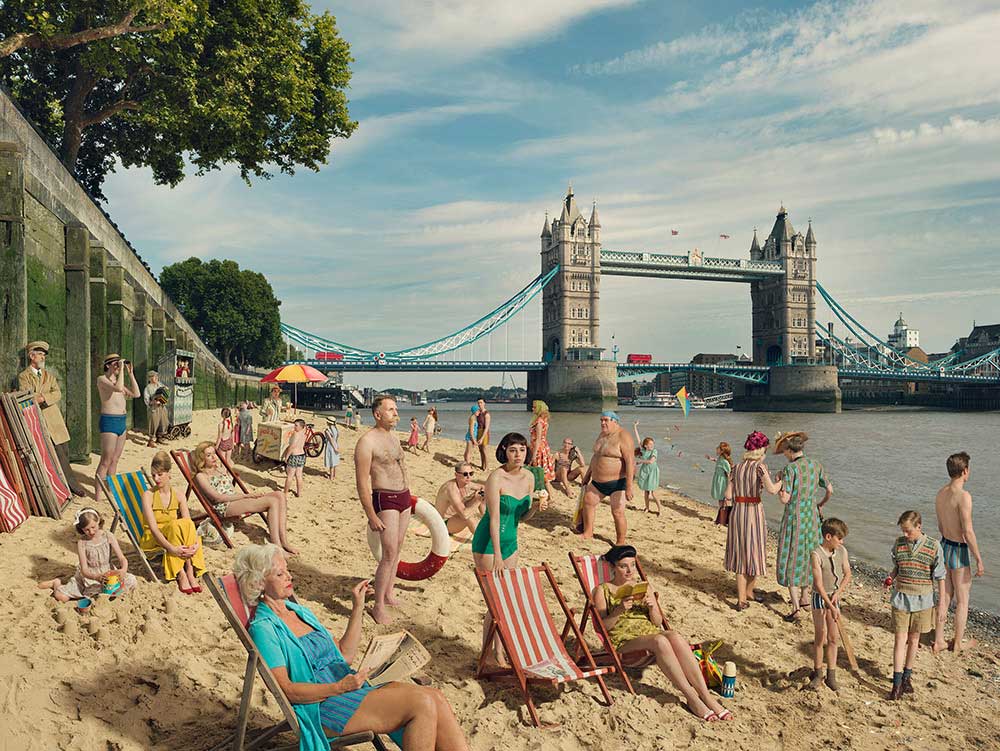
I’d like to conclude this interview by asking you about trace. Your images seem to highlight (in my opinion) elements and traces of the past. Are you focused on producing images that deal with this concept of personal trace? Or are you more concerned about discussing current issues within certain projects?
My earlier work reflected my emotions and feelings from my own past experiences as an adolescent and young woman. Since I completed those themes, I have turned my attention to social issues and historical events. Social issues include: ‘Blind’, ‘Unadorned’, and ‘The Act’. Historical events include: ‘In Service’ and ‘Feral Children’. ‘Old Father Thames’ is a composite of both social and historical aspects.







Francesco Scalici
A recent MA graduate from the University of Lincoln, Francesco has now focused on landscape photography as the basis of his photographic platform. An author for DODHO magazine, Francesco’s interest in documentary photography has turned to writing and has had various articles, interviews and book reviews published on platforms such as: ‘All About Photo.com’, ‘Float Magazine’ and ‘Life Framer Magazine’. Currently on a photographic internship, Francesco has most recently been involved in the making of a short film titled: ‘No One Else’, directed by Pedro Sanchez Román and produced my Martin Nuza.



